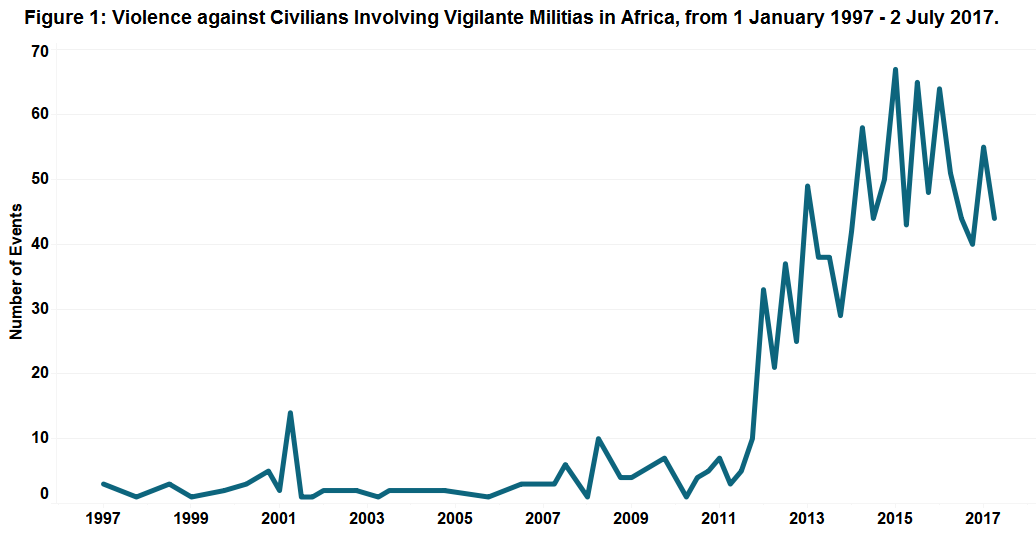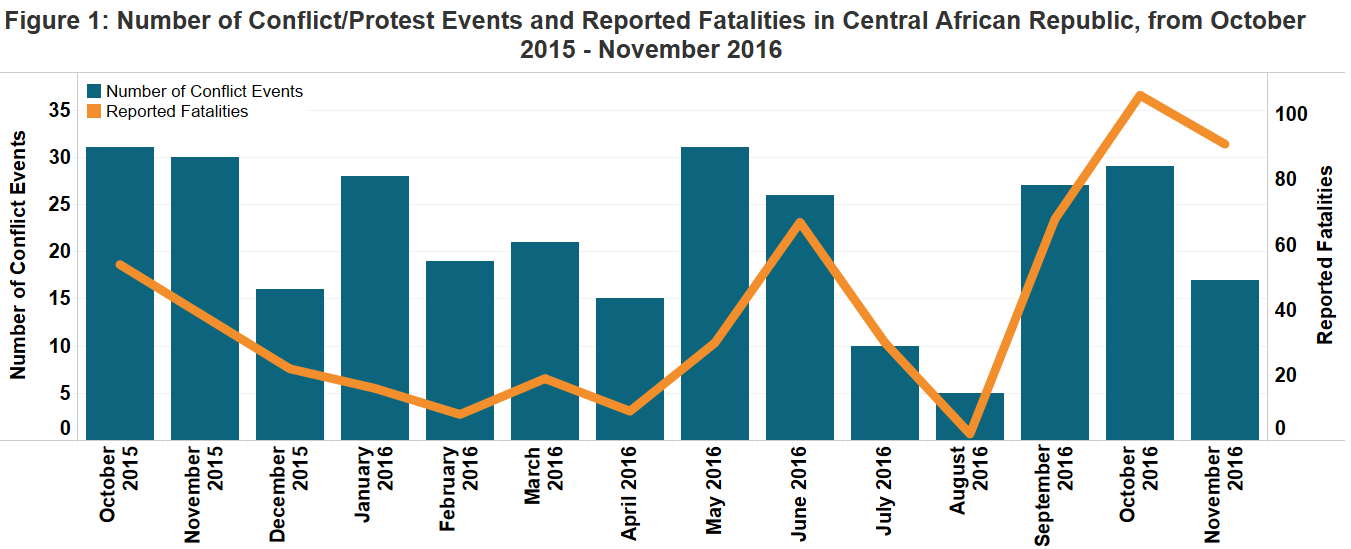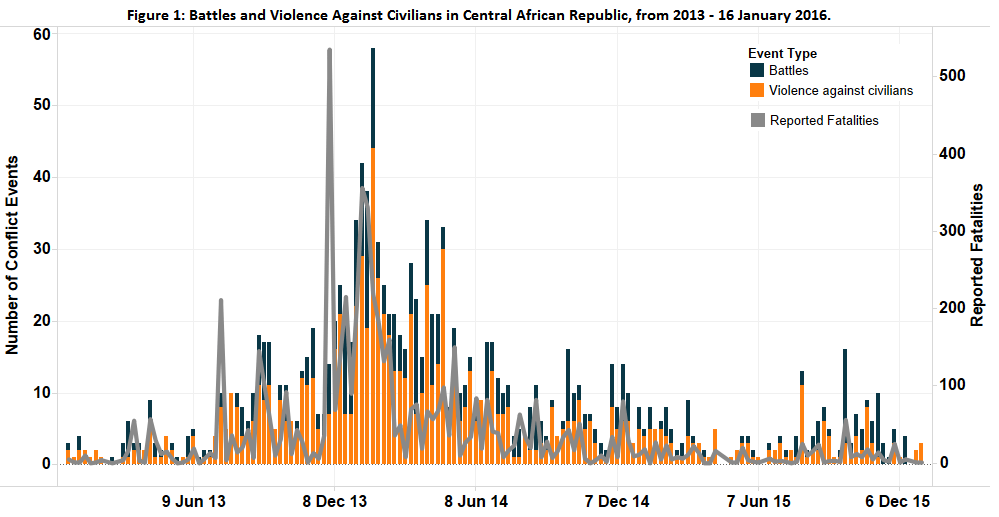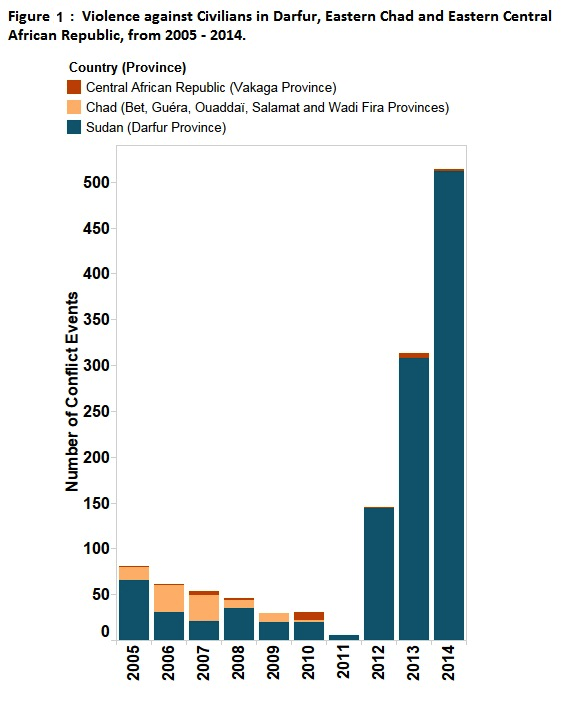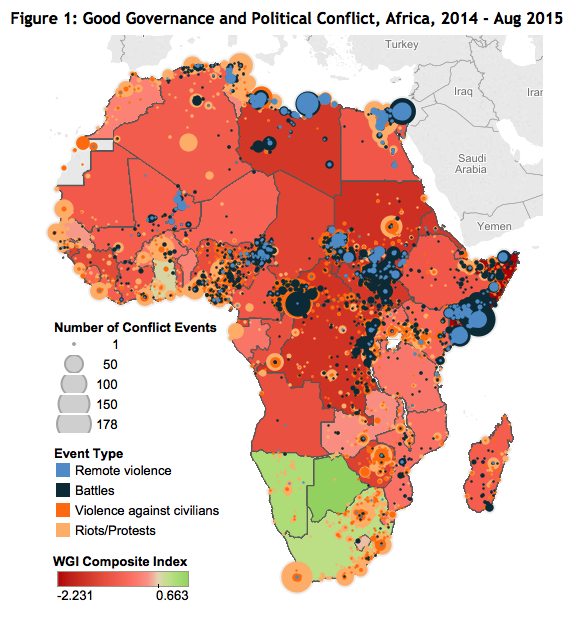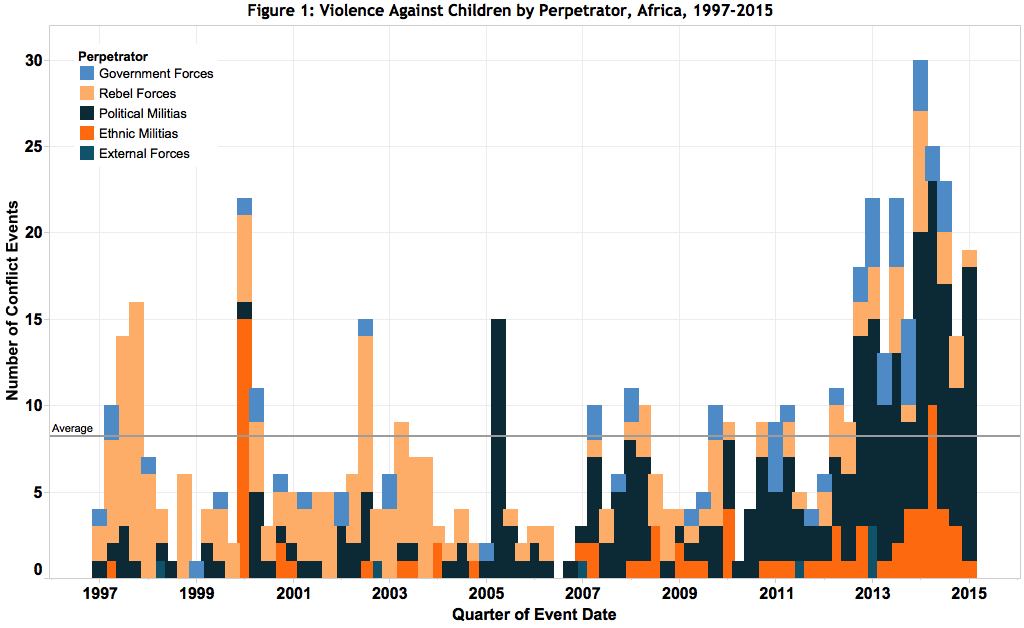Witchcraft and Vigilante Justice in Africa
17 July 2017
Violence involving vigilante militias has been increasing across Africa since 2012 (see Figure 1). Vigilante militias refer to groups that believe their role to be the delivery of justice; they are not formally organized groups and are often associated with a location or small group[1]. ACLED codes violence involving vigilante militias as these groups often…
- Africa
- Civilians At Risk
- Elections
- Focus On Militias
- Vigilante Militias
- Violence Against Civilians
- Witchcraft
Central African Republic – December 2016 Update
9 December 2016
The Central African Republic witnessed an encouraging overall decrease in lethal political violence during the first half of 2016. However, this was followed by a dramatic jump in violence from September to November which stems from the failure of the new regime in Bangui to forge a political settlement that appeals to the increasingly fractured…
- Africa
- Analysis
- Focus On Militias
- Political Stability
- Rioting And Protests
- Violence Against Civilians
Central African Republic — July 2016 Update
25 July 2016
Reported fatalities in the Central African Republic (CAR) have continued to fall since May 2014 to levels not seen since before the outbreak of widespread violence between Seleka and Anti-Balaka groups in late 2013-early 2014. By December 2015 the number of events recorded had fallen to a third and the number of fatalities to a…
Read MoreCentral African Republic — January 2016 Update
22 January 2016
The Central African Republic (CAR) has faced increased insecurity and violence since Séléka rebels marched on the capital, Bangui, and ousted then-President Bozizé in 2012 (Townsend, 27 July 2013). Since the height of violence in late 2013 / early 2014, the conflict has remained persistent and widespread (see Figure 1). To contribute to the insecurity…
- Africa
- Elections
- Gender-Based Violence
- Human Rights
- Inequality
- Peacekeeping
- Violence Against Civilians
Electoral Violence
9 October 2015
In mid-October 2015, Central African Republic (CAR), Ivory Coast and Burkina Faso will each hold elections. As Figure 1 shows, levels of violence during electoral periods are high in Ivory Coast: for example, the general elections in November 2010 resulted in a six-month civil war between militias of former President Laurent Gbagbo and the contested…
- Africa
- Analysis
- Elections
- Political Stability
- Remote Violence
- Rioting And Protests
- Violence Against Civilians
The Geographic Profile of Violence against Civilians during Peacekeeping Deployment — Containment and Diffusion
4 September 2015
Investigating the ability of peacekeeping (PK) missions to reduce levels of violence against civilians (VAC) requires an assessment of whether these deployments control the spread of anti-civilian actions. Previous studies contend that PK operations prevent contagion and reduce the scope of rebel violence by reducing their external shelters and restricting their ability to move (Beardsley,…
Read MoreCentral African Republic & Allegations of Abuse against Peacekeepers
4 September 2015
In April, allegations of child sexual abuse by French soldiers and other nationalities deployed as part of international peacekeeping efforts in Central African Republic surfaced. Since then, troubles have continued to mount for these forces. Despite the largely successful draw-down in violence across much of the country, claims of abuses by peacekeepers, now primarily regarding…
- Africa
- Civilians At Risk
- Peacekeeping
- Remote Violence
- Rioting And Protests
- United Nations
- Violence Against Civilians
‘Good Governance’ and Conflict in Africa
7 August 2015
The World Governance Indicators (WGI), produced by Kaufmann, Kraay, and Mastruzzi (2014), measure governance defined as “the set of traditions and institutions by which authority in a country is exercised; this includes (1) the process by which governments are selected, monitored and replaced, (2) the capacity of the government to effectively formulate and implement sound…
- Africa
- Civilians At Risk
- Governance
- Government Repression
- Political Stability
- Violence Against Civilians
The Exportation of Ugandan Rebel Violence: A Comparison of the Allied Democratic Forces and Lord’s Resistance Army
9 June 2015
In the past few weeks, the Alliance of Democratic Forces (ADF, formerly the Alliance of Democratic Forces – National Army for the Liberation of Uganda, ADF-NALU) has experienced several setbacks. Dozens of its soldiers have been killed or captured, including senior personnel, while its leader, Jamil Mukulu, was arrested in Tanzania at the end of…
- ADF
- Africa
- Civilians At Risk
- Current Hotspots
- LRA
- Political Stability
- Remote Violence
- Rioting And Protests
- United Nations
- Violence Against Civilians
The Targeting of Children in Conflict Zones, Part 1: General Trends
13 March 2015
Violence against children is a conscious strategy employed by armed groups within conflict contexts. When children are targeted or killed, it is often in an attempt to instill terror in populations, or to reaffirm brutality and gain (global) notoriety, given that the targeting of children is meant to send a message to (adult) adversaries and/or…
Read More

